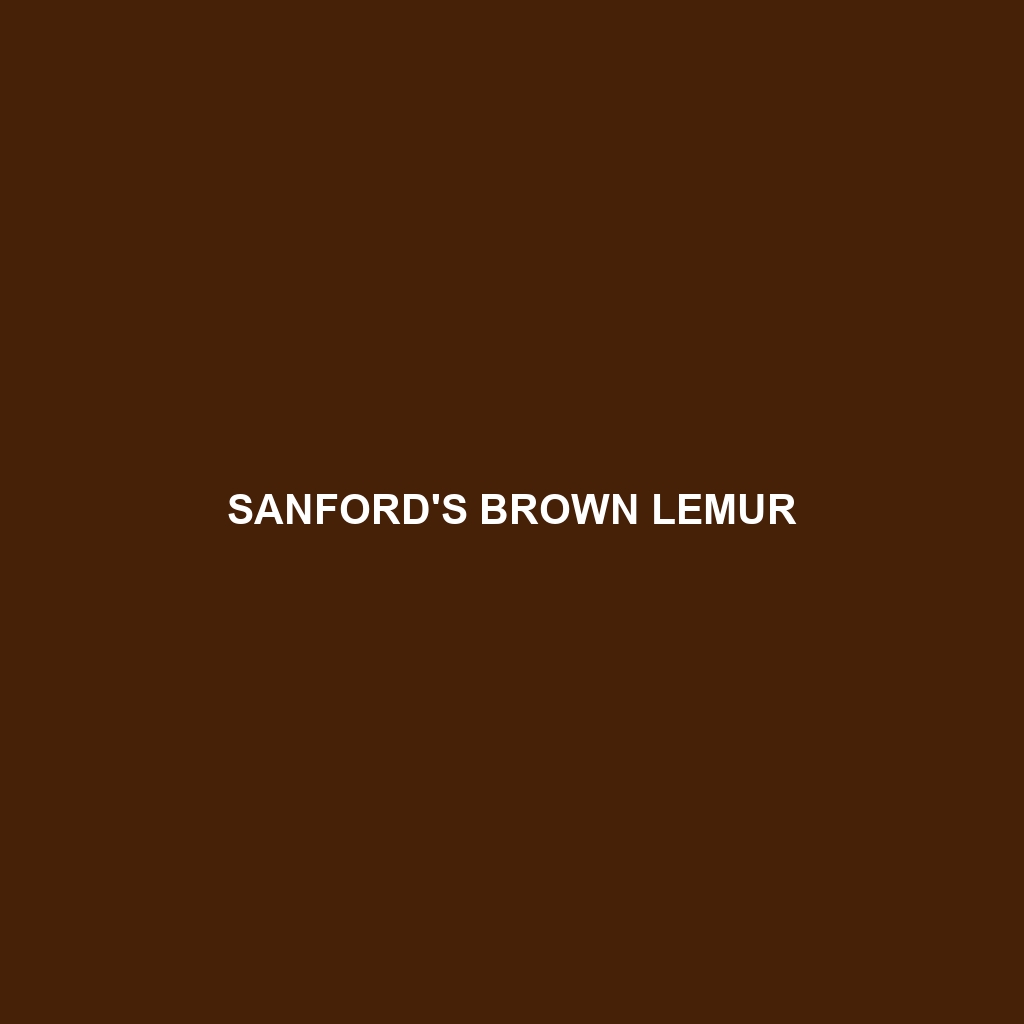Sanford’s Brown Lemur
Common Name: Sanford’s Brown Lemur
Scientific Name: Prolemur simus
Habitat
Sanford’s Brown Lemur is primarily found in the lush tropical forests of Madagascar, particularly in the regions of the eastern rainforests, such as Andasibe-Mantadia National Park and the Masoala Peninsula. This species thrives in humid, dense canopies where they can find ample fruit and foliage, which are critical to their survival.
Physical Characteristics
Sanford’s Brown Lemurs are medium-sized primates, averaging about 40 to 55 centimeters in length, excluding their long tails which can add another 50 centimeters. They typically possess a rich brown to gray fur with lighter underparts, and their faces are characterized by distinctive white markings. Their large, expressive eyes can be orange or yellow, adding to their striking appearance.
Behavior
These lemurs are primarily diurnal, exhibiting active behavior during daylight hours. They are known for their sociable nature, often living in small family groups led by a dominant female. Sanford’s Brown Lemurs display a range of vocalizations to communicate, from soft coos to loud calls, which can be heard as they navigate through the trees.
Diet
The diet of Sanford’s Brown Lemur is predominantly herbivorous, consisting mainly of leaves, fruits, and flowers. They particularly enjoy ripe fruits, which play a significant role in their foraging behavior. Their feeding habits are crucial for seed dispersal in their habitat, contributing to the growth of various plant species.
Reproduction
Sanford’s Brown Lemurs have a defined breeding season, typically occurring from September to December. After a gestation period of approximately 120 days, female lemurs give birth to one or two offspring. Infants are highly dependent on their mothers for the first few months of life, and they begin to venture out with the group as they grow.
Conservation Status
The current conservation status of Sanford’s Brown Lemur is listed as Endangered by the IUCN Red List. Habitat loss due to deforestation and illegal logging poses significant threats to their survival, alongside hunting pressures from local communities.
Interesting Facts
Sanford’s Brown Lemur is notable for its ability to adapt to various forest types, demonstrating remarkable agility in navigating through the treetops. Additionally, they are part of a unique ecosystem in Madagascar that is home to various endemic species, showcasing the region’s rich biodiversity.
Role in Ecosystem
In the ecosystem, Sanford’s Brown Lemurs play a vital role as both seed dispersers and prey for larger predators. Their feeding habits help maintain forest diversity, while they serve as an essential food source for various birds of prey and other carnivorous species in their habitat.
